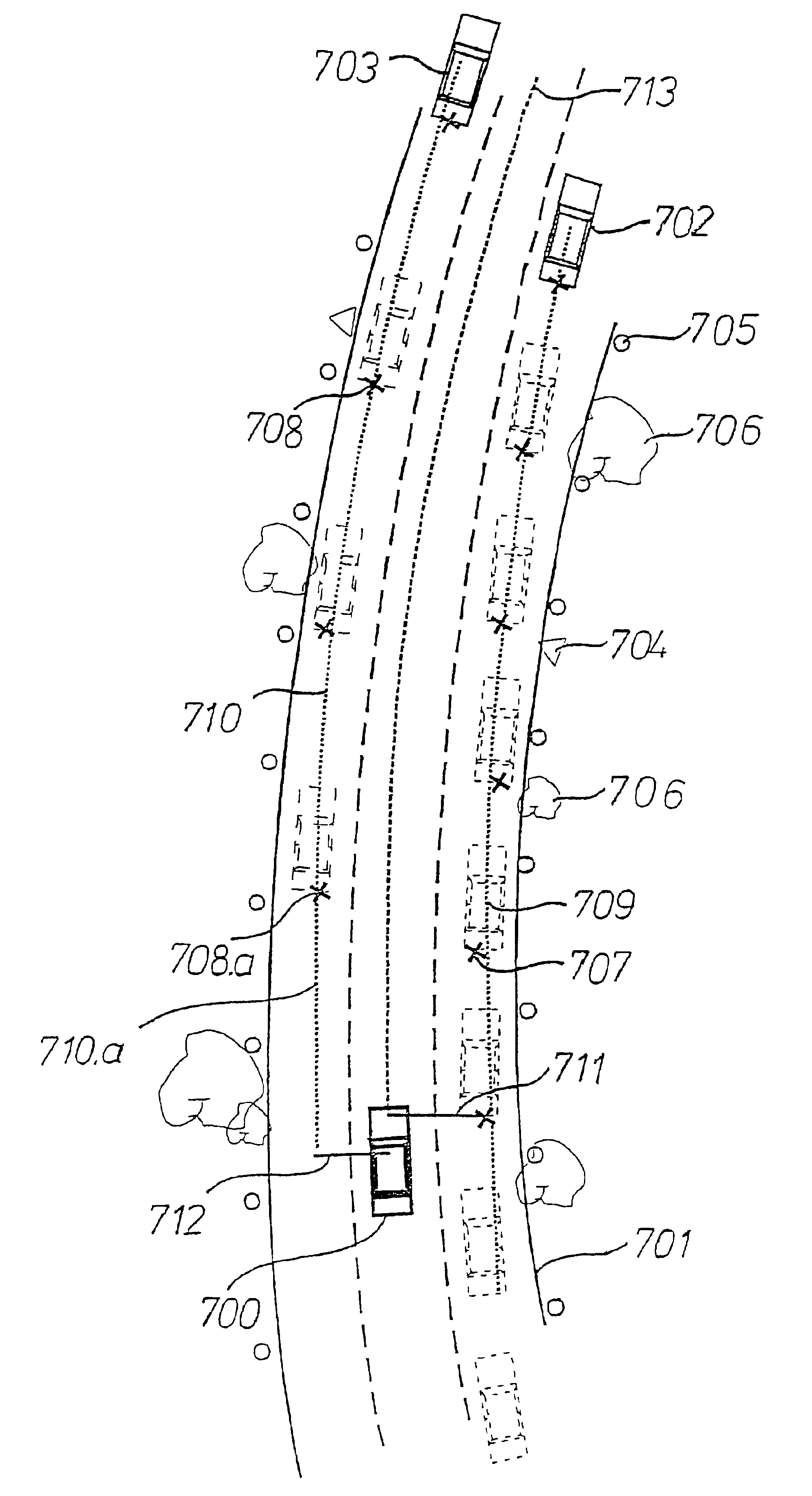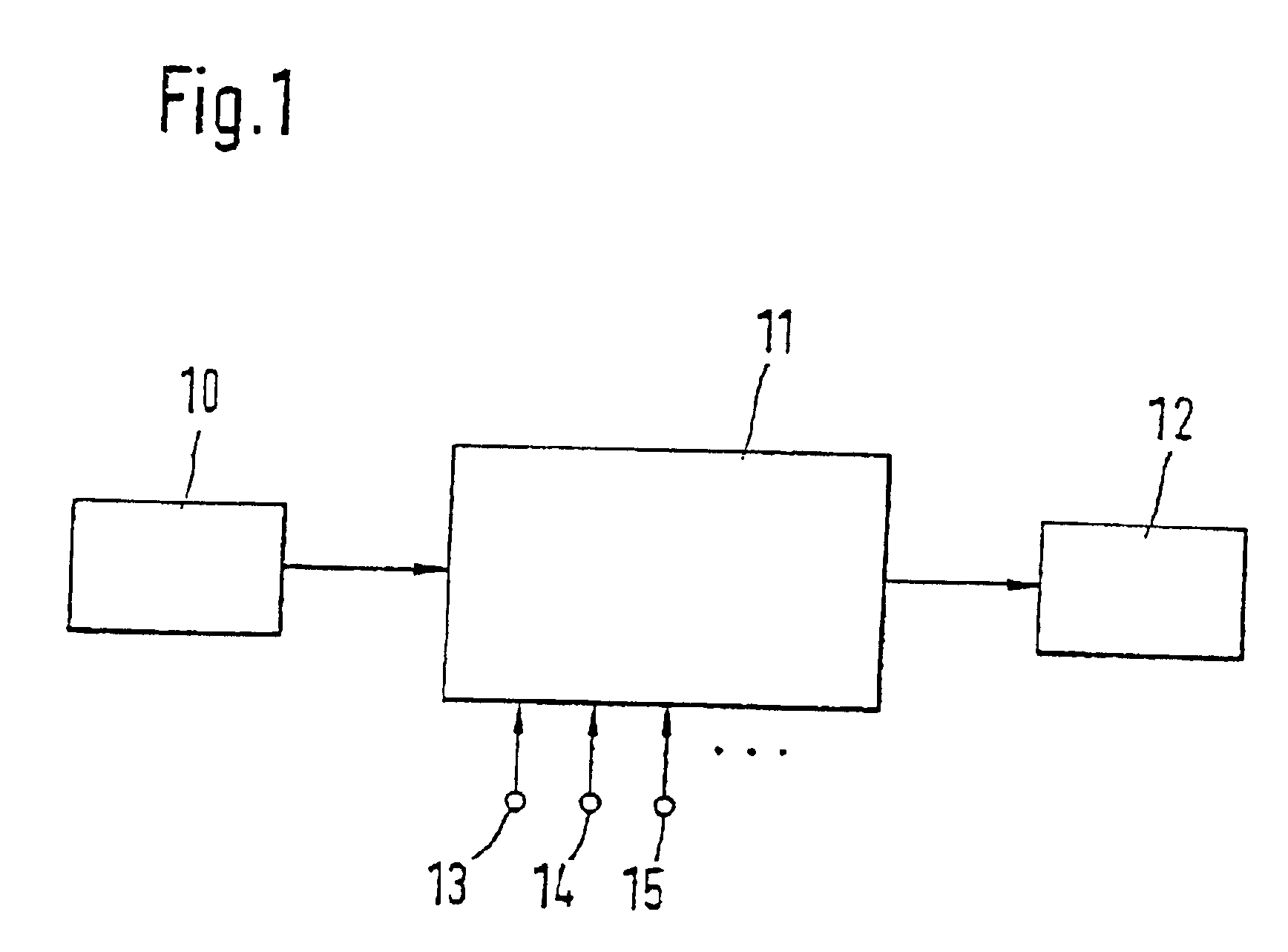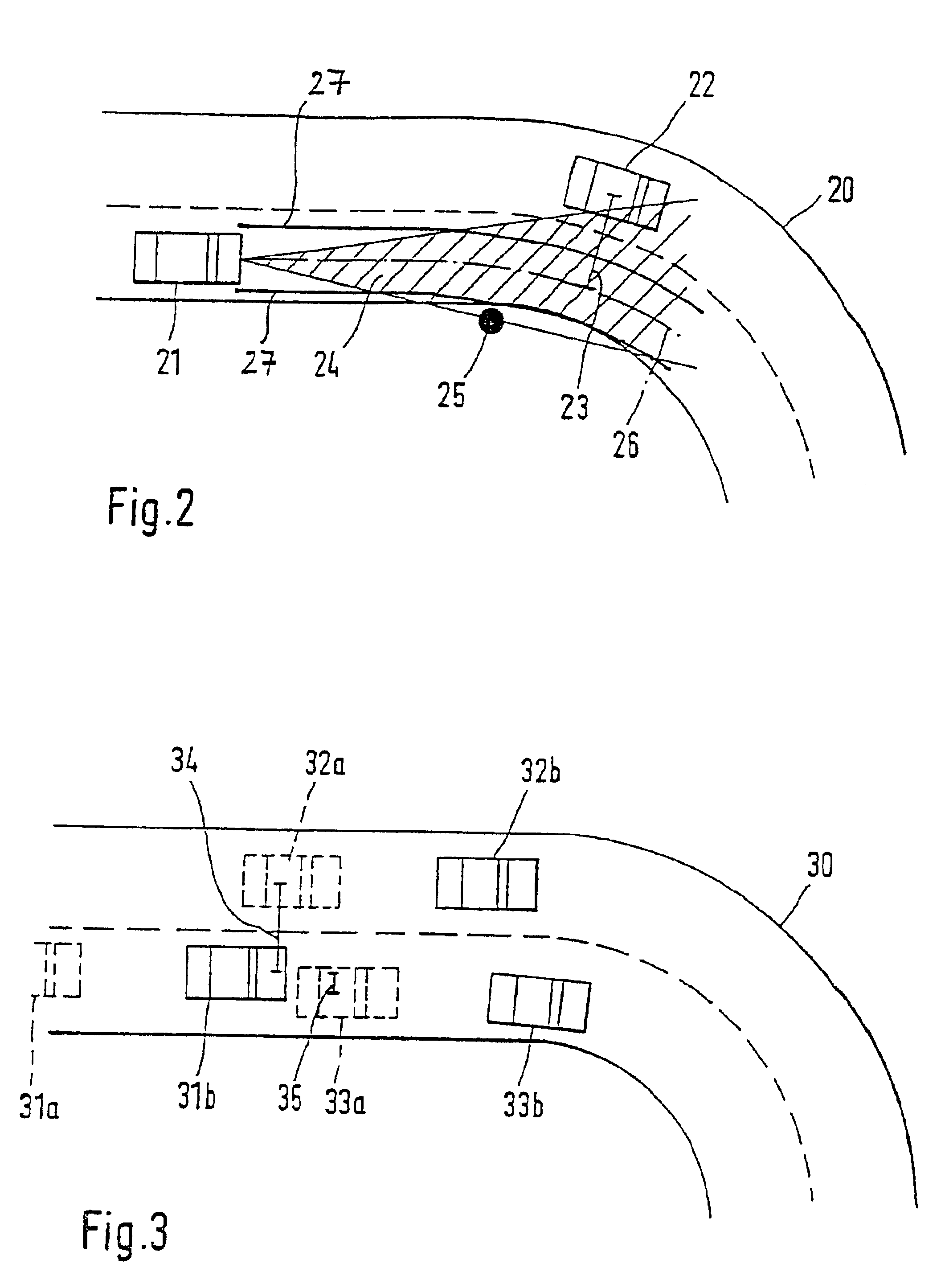Method and device for determining a future travel-path area of a vehicle
- Summary
- Abstract
- Description
- Claims
- Application Information
AI Technical Summary
Benefits of technology
Problems solved by technology
Method used
Image
Examples
Embodiment Construction
FIG. 1 shows a device for carrying out the method according to the present invention. A distance sensor 10, for example, a radar or a laser sensor, is connected to an evaluation and control unit 11. Evaluation and control unit 11 receives numerous further signals, of which, by way of example, an input 13 for the vehicle's own speed, an input 14 for a steering angle, and an input 15 for a yaw rate are depicted here. Furthermore, evaluation and control unit 11 is connected to one or a plurality of actuators 12. The entire device is installed in a first vehicle. Using distance sensor 10, in accordance with conventional methods, vehicles traveling ahead, oncoming vehicles, as well as stationary objects on, and on both sides of, the roadway are detected. Corresponding measuring data are pre-processed and are supplied to evaluation and control unit 11. The latter, in accordance with the method described below, determines at least one future travel-path area of the first vehicle. In the co...
PUM
 Login to View More
Login to View More Abstract
Description
Claims
Application Information
 Login to View More
Login to View More - R&D
- Intellectual Property
- Life Sciences
- Materials
- Tech Scout
- Unparalleled Data Quality
- Higher Quality Content
- 60% Fewer Hallucinations
Browse by: Latest US Patents, China's latest patents, Technical Efficacy Thesaurus, Application Domain, Technology Topic, Popular Technical Reports.
© 2025 PatSnap. All rights reserved.Legal|Privacy policy|Modern Slavery Act Transparency Statement|Sitemap|About US| Contact US: help@patsnap.com



